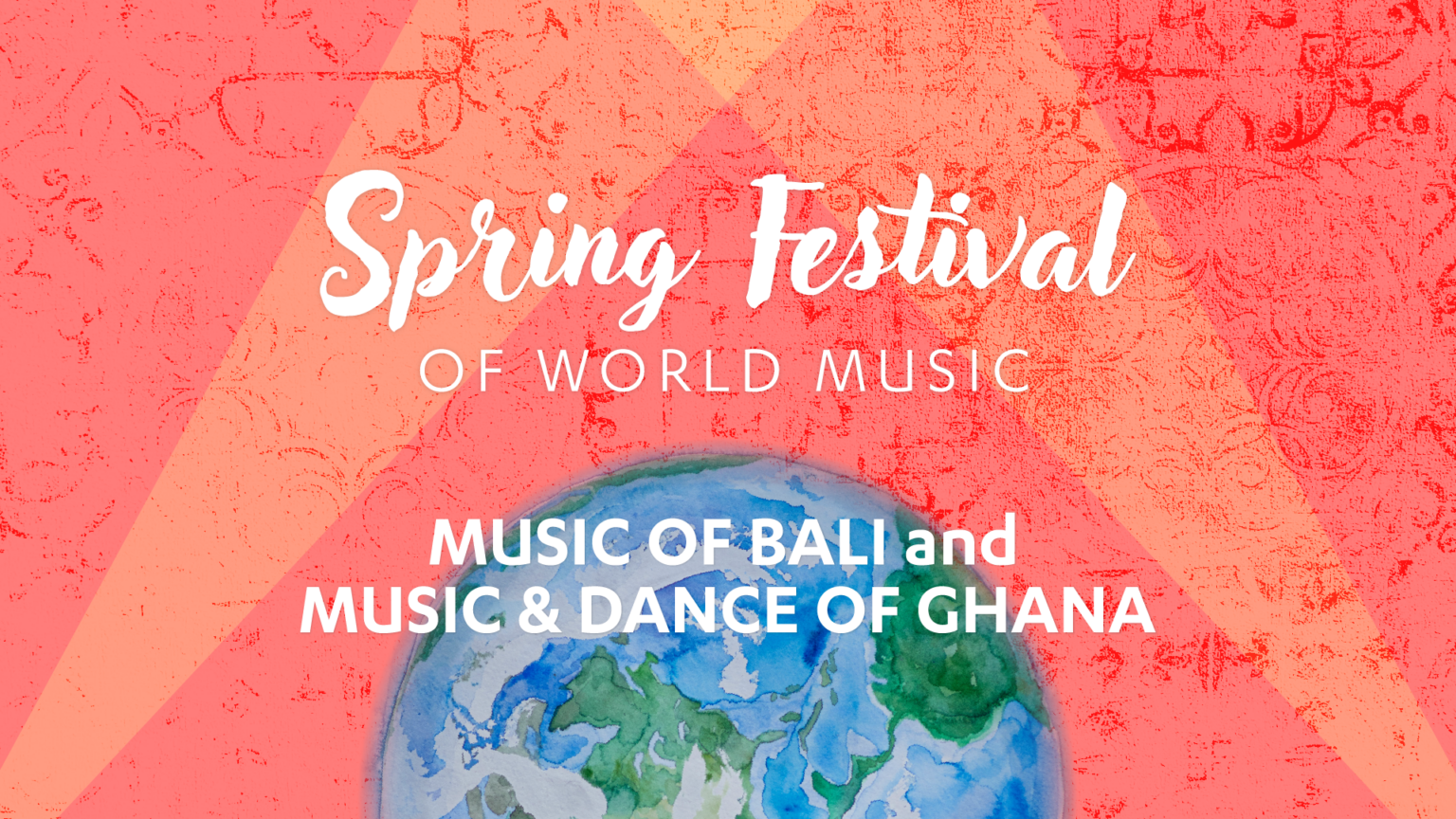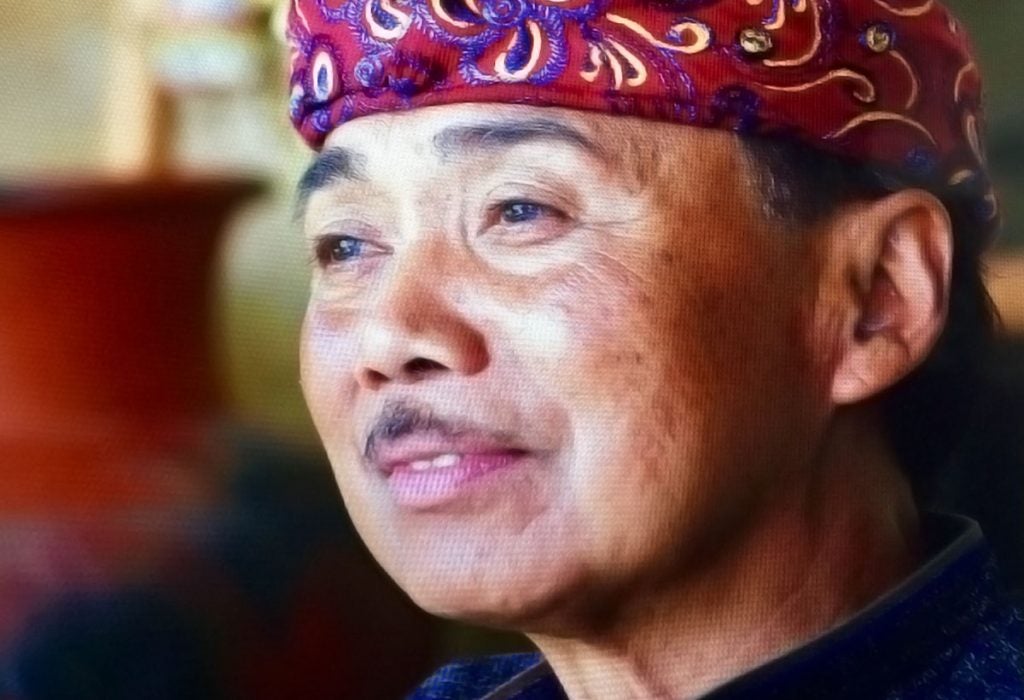
Ensemble Directors

I Nyoman Wenten
See Bio
I Nyoman Wenten is one of Bali’s most versatile dancers and musicians. He is well known for his abilities in Javanese as well as his native Balinese dance and music. He has taught at the National Academy of Dance in both Bali and Java, and at many music and dance programs in the United States including the Center for World Music, San Jose State University, University of Wisconsin, University of Washington, San Francisco State University, UCLA, UCSD and San Diego State University.
Wenton has toured and performed throughout the United States, the People’s Republic of China, the Philippines, Japan, Mexico, and Europe, and recently assisted the Consulate General of the Republic of Indonesia as director of music, dance, as well as the language program for the Indonesian Cultural Center. In addition to teaching at UCLA, he is currently Chair of Balinese and Javanese Music and Dance, World Music at California Institute of the Arts.
Ph.D. Ethnomusicology, UCLA; advanced degree from the National Academy of Dance in Jogyakarta, Java; degree from the Music and Dance Conservatory in Bali.
Program
UCLA Balinese Gamelan Sekar Anyar (“New Flower”)
Directed by Nyoman Wenten
Nanik Wenten Guest Dance Director.
Program
1. Tabuh Siwa Nata
This piece was composed by a well-known Balinese composer, Mr. I Wayan Sinti. Originally played for an older type of gamelan orchestra namely gamelan Semar Pegulingan.
2. Pendet Penyambutan dance
The creation of this dance was based on Balinese temple dance so-called “Pendet” the dance of offering. Tonight this dance is performed by a group of dancers to welcome the audience.
Dancers: Iliki Valencia, Arista Naresawri, Lisa Tepper, Shella Berg.
3. Tabuh Suara Suling
“Suara Suling” means the sound of a flute. It was composed by well-known musician I Wayan Gandra. It was inspired by the Javanese piece that was created by a very famous composer, Ki Narto Sabdo, in the 1960s.
4. Cendrawasih dance
Cendrawasih (“the bird of Paradise”) This dance was choreographed by Swasthi Wijaya Bandem a well-known dancer and choreographer in 1988. Cendrawasih dance was inspired by the bird of paradise, usually performed by two or four dancers, and illustrates the mating ritual of these birds.
Dancers: Sandrawati Kosasih Beauchamp, Sri Mega Andini, Kerri Shak, Tristan J. Samson.
5. Tabuh Gilak Penyuwud
‘Penyuwud,’ means the end. This piece is usually played at the conclusion of a performance.
UCLA Gamelan Sekar Anyar (New Flower)
Current members: Henry Baskin, Dawson Jacob Lau, Sylvie Joseph Loh, Rio Nakamachi, Danielle Ericka Nalangan, Gael Ivan Saldana, Reiko Sato, Lily Crook, Dashiell Webster Goss-Post, Ikaika Gunderson, Ruby Tekori Lim-Morino, Samantha Maria Mullen, Yuga Saito, Kent D Suhadi, Scot Oliver Wijaya, Jonathan Nguyen, Mateo Lee Murphy, Camille Collins, Liv Berg.
Guest Musicians: From Gamelan Burat wangi (Fragrant Offering).
Adam Wayan Berg, Matthew Clough-Hunter, Spencer Hauck, Kayle Khanmohamed, Benjamin Champion, Caroline Reyes.
Guest Dancers: Iliki Valencia, Arista Nareswari, Lisa Tepper, Shella Berg, Sandrawati Kosasih Beauchamp, Sri Mega Andini, Kerri Shak, Tristan J. Samson.
***
Music and Dance of Ghana
Directed by Francis Kofi Akotuah
The Music and Dance of Ghana Ensemble performs dance-drumming compositions from the southern and central parts of Ghana, West Africa. The course concentrates on drum patterns, songs, and dances, and the ensemble produces complex polyphonic textures on a variety of drums, bells, and rattles to accompany dances that span the range from fun social entertainment to more serious historical reenactment.
Program
Kete
Asante
It is difficult to categorize Kete, but calling it a song or piece would be doing it an injustice. It is closer to a suite or genre of music, performed on an ensemble of drums that are traditionally wrapped in red and black cloth to signify the weight of themes it often deals with. Traditionally restricted to the royal court of the Asante king, Kete has now been “released” and is permitted to be played at all types of invents. Today, it is rare that a day passes in Kumasi, the heart of the Asante kingdom, where you will not hear Kete at an event of some kind. Kete instruments include a long bell called dawuro, a rattle, ntrowa, donno, an hourglass drum played under the arm, support drums aburuwuka, apentemma, and petia, and kwadum, a booming bass drum that leads the ensemble. Depending who you ask, the number of different sections in Kete range from the mid-teens to the mid-twenties, and we will be playing three of them here tonight, Adabramua, Akwadom, and Kwakwanisuo.
Sikyi
Asante
Sikyi is a fun, lighthearted dance that emerged in around the 1920s. Originally more of a freeform activity, these days it is generally performed as a choreographed boy-meets-girl dance drama with some flirtatious elements built-in. For fans of highlife or palm wine music pay close attention to the bell pattern, which is a common motif in those musical genres. The lead drum of Sikyi is called Sikyi, and is played standing. Support drums include agyegyewaa, apentemma, and a set of three differently tuned handheld frame drums called tamalin. The ensemble is rounded out by bells worn around the finger called frikyiwaa, and the ntrowa rattle. We’ll be supplementing with a dawuro bell for volume, as well.
Kinka
Anlo-Ewe
Kinka is a versatile piece that is featured prominently in all life-cycle events in Eweland, including funerals, weddings, naming ceremonies, and festivals. Emerging within the last few decades, the structure of Kinka is for the lead drummer to initiate a rolling signal to change, after which they call a new variation for the support drummers to respond to. Kinka has an ever-expanding repertoire of variations that can be called, with different groups constantly innovating. Kinka songs span the range of themes from wide-ranging commentary on society to humorous local happenings that become immortalized if they’re set to a catchy enough song. A Kinka ensemble includes a double bell called gankogui, a rattle called axatse, support drums called sogo, kidi, kagaŋ, agboba, and the lead drum, atsimeʋu. Some performance groups even utilize two atsimeʋus, with virtuoso drummers handing off between each other in good-natured, friendly competition.
Kinka is not a choreographed piece and is generally performed in such a way that the entire community participates, either through singing, dancing, or playing a rattle. When performed in Ghana, it becomes a 360 degree auditory experience. Members of the community are welcome to step into the dance circle at almost any time. We will be doing our best to replicate that ethos on stage tonight, with special guest Ghanaian artists here to accompany our students and join our community for this evening.
Student Performers
Jasmine Bailey
Ellis Bruxvoort
John Cao
Aidan Doyle
Amir Elahi
Harrison Germick
Daniel Harris
Batyah Jasper
Orisha Lamon
Raina Markham
Linus Murphy
Sydney Owens
Christian Rodriguez
Alex Royat
Haru Sakurai
Daniela Santos Hernandez
Raanan Schweig
Kennedy Shelby
Chloe Suiter Holmes
Guest Performers
Dzidzogbe Beatrice Ladzekpo
Yeko Ladzekpo-Cole
Kevin Moran
Bradley Butterworth
Doug Berman
Philip Agyapong
Sammy Oduro